Introduction
I have to admit, it took me a while to figure out how to put this Almanac together. There is so much information I wanted to share with you, that it’s next to impossible to organise it in my head. But, I will try my best, which is why I will begin with how the Helena Hawthorn series began in the first place.
I believe it all began in autumn of 2012 when I was in my second year of university. To those who don’t know, I studied Computer Science and never once dreamed of becoming a full-time author. That was something unthinkable to me. Authors, unless backed by massive marketing campaigns and their publisher, typically didn’t earn enough to support themselves. It is also the reason why so many authors are forced to work two jobs at a time, sometimes more.
Every autumn, the weather in Ireland is abysmal. It rains a lot, the whipping winds are eager to climb under every layer you have, and the days get shorter with each passing day. More than on one occasion, I found myself walking home along the dimly-lit streets and wondering, “What if there was a vampire hiding in the dark? No one would even notice I disappeared.” My imagination got the best of me. I’d imagine different scenarios as well as interactions with supernatural beings if they existed.
My ideas started being fleshed out on paper when I became friends with a transfer student from Australia. She loved jotting down her adventures in her journals as she backpacked across European countries. That’s why I ended up writing for fun. In retrospect, if I never met her, I wouldn’t have written my first novel, Russian Roulette. So, I cannot thank enough the people who have supported me in the first draft, as horrid as it was. Every time I look back at it, I want to apologise for subjecting my friends to such torture.
In the first draft, Helena’s character was based on me. My fears and worries were hers. At the time, I had zero clues as to what made a good character. This is why in the summer of 2015, I completed a writing course with a published author as a mentor.
Here are some major changes that happened between the first draft and the final:
- Helena was dating Andrew instead of just being friends with him. There were a lot of internal conflicts when he became a vampire. So, that bit was changed for her to get along with Lucious quicker.
- She was moving in to live with Andrew, without Laura.
- Lucious was much less likeable.
- Helena was on the volleyball team with Laura.
- Lucious first met Helena on her college campus by tracking her down through the soul-bond.
- Alexander had his own POV.
- The story was written in the First Person.
- Vampire politics were expanded.
In my office, I have three notebooks that contain my notes on the series over the past six years. They also include some of the sketches I did to envision the characters and to keep myself awake during certain lectures.
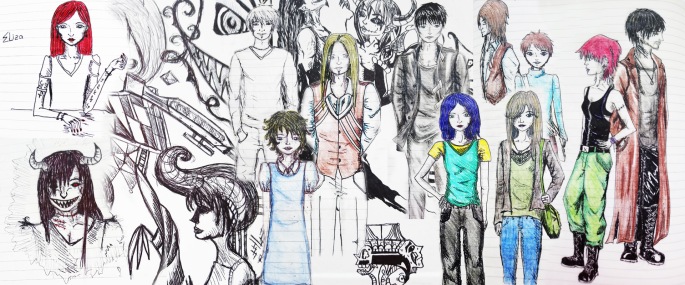
Having said all of that, I truly believe that without everyone who has helped me along the way, I wouldn’t have gotten anywhere. Their belief, willingness to encourage me, has been everything I could hope for from family and friends. I will eternally be grateful to you all.
With the backstory behind us, I wanted to introduce each of the realms separately. Let’s begin with the Human Realm.
Human Realm
Humans
Have you ever sat down and wondered what if there were multiple worlds parallel to ours, and they intersect in different places? At those particular intersection points, creatures from other worlds can come through and interact with our world. Nope? Well, I do all the time. This minute thought is the reason why so many realms exist in this series. Three are populated and the fourth realm is empty (until Reaver got to it, that is). There are pockets to other empty realms, but I’m only focusing on four in the story.
For your benefit, here’s a sketch of the realms from my notes. Although it’s 2D, the actual concept is that it’s a 5-dimensional universe.
The fifth dimension allowed for demons and angels to go around the Human Realm without being noticed by humans and most of the supernatural beings unless they wish to be seen. That’s the reason why the angels, Michael and Horus, were able to appear and disappear whenever they wanted. They are able to manipulate the space around them. Angels can physically manifest in the Human Realm. The opposite can be said about demons. They don’t have a physical body in the Human Realm unless they possess a vessel.
AUTHOR’S NOTE: Michael is an exception to the rule. He wasn’t allowed to manifest physically under the threat that he would be erased from existence by the Angel Realm’s gods. He was only to serve out his sentence by watching Lilia suffer her fate and die. When he intervened to save Helena’s and Lilia’s lives in Crumbling Control, he was then erased permanently for breaking the rules of his punishment. That’s right. Michael is well and truly gone.
Definitions:
Humans are kept out of the loop by the supernatural beings. The few that do possess the knowledge of their existence are too scared to reveal the details for fear of death or because no one would believe them.
Donors are humans who donate their blood to vampires willingly after being in their circles for a long time and have accepted a vampire’s protection. They tend to earn a good living and some even gain influential power in the human society through the vampire’s connections.
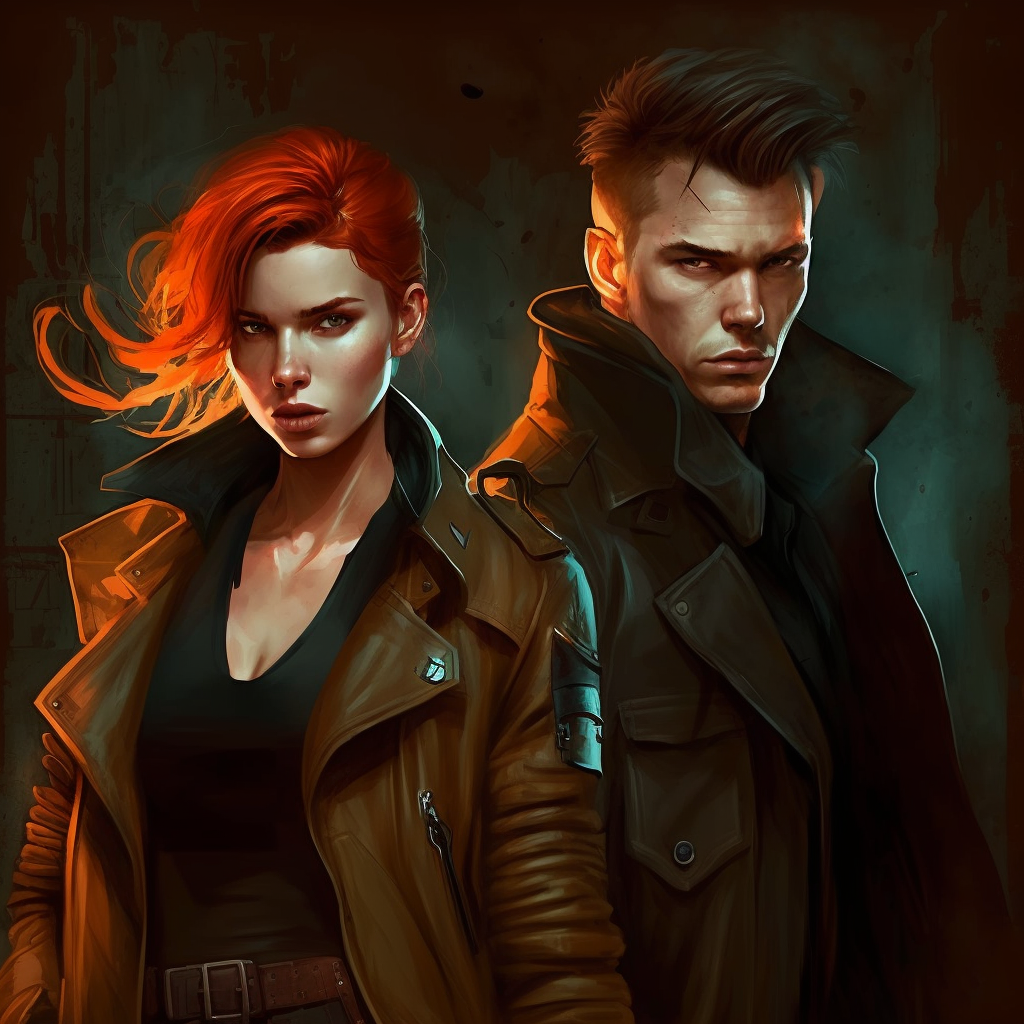
Hunters: people who took upon them the quest to eliminate all of the supernatural under the guise of “If they’re not human, they’re against us.”
Each hunter has a life-long partner. They build trust with each other over the years of intense training. Some are able to choose their partners whilst most tend to go with the suggestion from the elders of their clan.
Bred hunters (generation hunters) tend to follow the orders of their clan leader(s) without question. They are stronger and faster than newly recruited people that join the ranks after an encounter with the supernatural, whether it is to get revenge or due to other circumstances.
It is not uncommon for clan leaders to take in orphaned children and train them in the art of killing the supernatural creatures.
All of the hunter clans are separate unions. In the past one thousand years, their beliefs started to align. Some clans decided to merge and form a hierarchy of leaders who serve Orion—a being they see as a god. Unaffiliated clans interact with one another but strictly for business or if they’re trying to cross into a new territory whilst trying to hunt down their prey.
Punishments are common. If a hunter breaks the clan’s rules, he/she and their partner will be held accountable.
All hunters consume colloidal silver in small doses over the duration of their life to absorb silver into their bloodstream, making their blood poisonous to vampires. As they age, some tend to get a bluish tint to their skin because of this.
Hunter marriage: It is not uncommon for partners to marry one another. Should they wish to marry someone else, a suitable match is provided by the clan elders to produce a bred hunter. Bred hunters have less freedom when it comes to marriage. Oftentimes, their partner is selected for them from a very young age.
Hunter parents have a choice whether to include their children in the life of a hunter until the age of twelve. If the decision is not made, the clan leader will decide for them.
Common items the hunters carry: pistols (silenced) with silver ammunition, silver blades or daggers, portable UV lamps, listening equipment, military grade rope, liquid mercury, mercury ammunition, wolf’s bane.
Personalised weapons depend on the individual. Most prefer pistols. Others have been known to be more adventurous in their choices.
HUNTER RULES:
- Never get too close to a vampire. They are stronger and faster. They can rip your head off in a few seconds that you lose track of their movement. Keep your distance.
- Always take the environment into the account. If it’s raining, it may hinder your sight. If it’s dark, you must rely more on your hearing.
- You must improve all senses.
- Always train.
- There is no such thing as fighting dirty.
- Prioritise your and your partner’s survival.
- Should you become one of the monsters, you must take your own life or the clan will be forced to do it for you.
Vampires





Vampires are probably my favourite out of all the paranormal creatures. It took a long time to figure out what kind of vampires I wanted, what their limitations would be, their weaknesses, and, of course, their feeding style.
In 2012, when I was writing the draft of the first book of the Helena Hawthorn series, Twilight’s popularity was fading. I couldn’t imagine any of my vampires sparkling like disco balls in sunlight. I mean, how is that scary? No one would even assume they were vampires, just a pale person covered in glitter.
I believe myself to be a realist and a traditionalist. Therefore, I focused on a realistic aspect of what sunlight could do to them, like make them faint because they’re sensitive to it. I kept their healing ability, inhuman speed, and thirst, which are all the values that make up a traditional vampire. The one thing I did change was that taking their heart out as well as a silver bullet to the heart could kill them. Typically, silver is associated with werewolves but in this universe, werewolves are allergic to something else entirely.
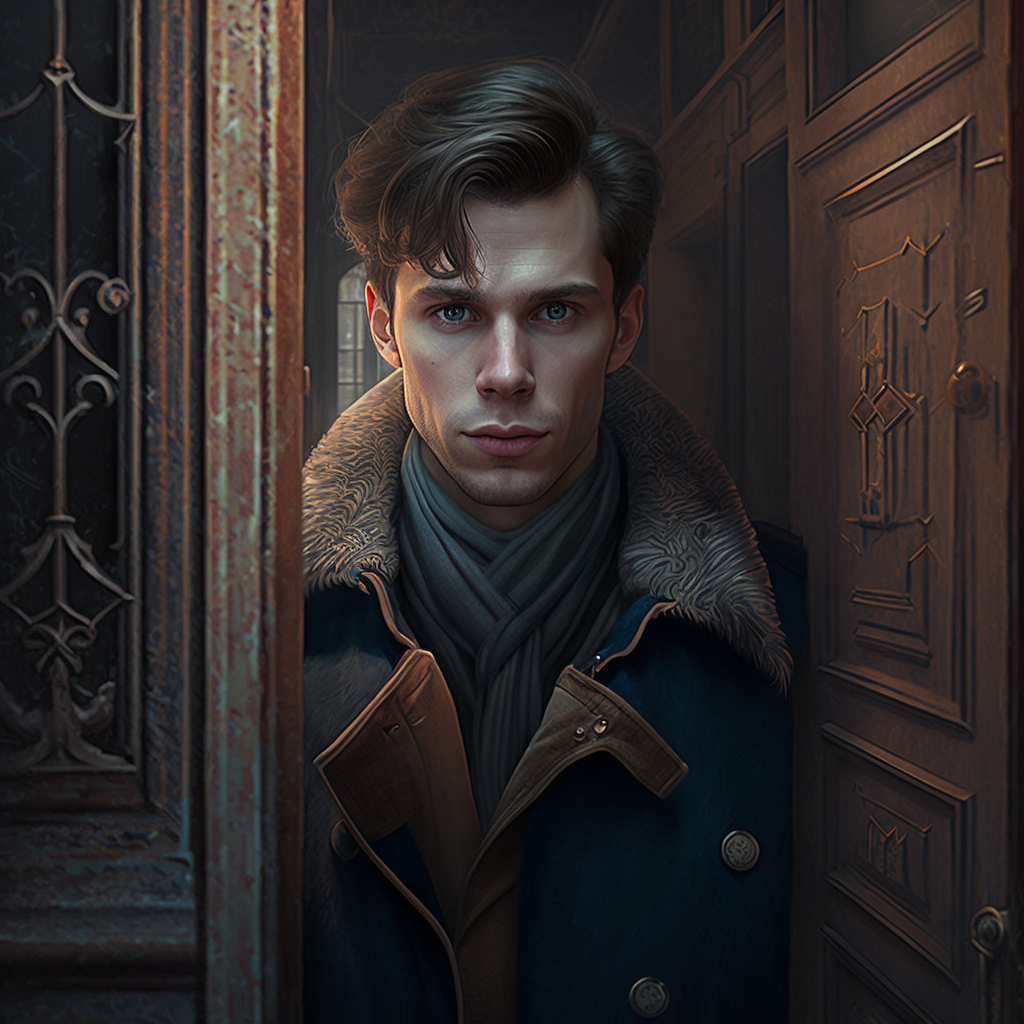
AUTHOR’S NOTE: In Demon Gates, I left an Easter egg for readers to find. Some of you have suspected or have, indeed, guessed it, but many have missed it. Helena’s father, Iven, was turned into a vampire when she was a child. That was the reason why her grandmother was so against him seeing Helena and Sasha. Her grandmother then sent him to the Blood Gate to try and kill Lazarus with the black arcanae mortum. It was there Iven perished in vain, never to see his family again.
P.S. The vampire who sired Iven is still alive.
Definitions:
Childe: A human that had been turned into a vampire. Depending on the age and power of the sire, the childe may adapt quicker, as the energy they would have been given in the initial turning would have been greater. On average, it takes between 1.5 years to 2 years for a newborn vampire to get used to the thirst (this depends on the willpower the childe possesses.)
Few cases in vampire history speak of vampires who managed to conquer the thirst early, and many of these vampires had developed abilities later on in life – one of them being Vincent of the European Council with his power of the ‘Voice’. (It should be noted that on record, Vincent is the only vampire who had inherited Arthemis’ ability instead of the more common abilities that stem from the Royals.)
Newborn vampires are trained in a controlled environment where there are no humans to tempt them. The only humans that are brought in are those the sire trains the childe with to master their thirst.
A childe is unable to hurt his sire. The energy residing within the childe is able to recognise the original source and, therefore, making the sire protected from his childe’s attack. Theoretically, there are vampires that could overcome this by becoming stronger than their sire. This can be seen when Lucious kills Anna in Crumbling Control.
Sire: A title given to a vampire after he had turned a human by sharing his energy with the person and then taking their life. The childe refers by that title or by the name of their sire to them.
Most of the sire-childe relationships are good where the childe respects the one who had granted them their second life yet there are cases where the childe had been created against their will and the relationship becomes volatile.
A sire is able to control his children by using his energy, which he instilled into them before turning them. This tends to ruin the trust between the sire and his childe, so it is considered to be the last resort.
Royals: The first seven vampires were recorded as Kallias (Pillar of the Past), Bion (Pillar of Energy Shaping), Cenric (Pillar of the Mind), Ealdraed (Pillar of Elemental Fire), Hartwin (Pillar of Mystic Sight), Laclia (Pillar of the Future), and Runa (Pillar of Speed) and were sired by the original/first vampire, Arthemis. His origins remain unknown to the vampire community since he had disappeared off the face of the earth sometime in the early 1200 B.C. Most vampires think of him more as a mythical story than an actual being while others are relentlessly trying to find his whereabouts.


Royal vampires usually are not interested in partaking in the ruling of the regions, so they remain hidden. They have developed an ability to hide/control their energy levels and use it often to deceive those around them by pretending to be weaker.
Common vampires know little about the Royals and even their children do not know where their sires are most of the time.
Not many vampires know this, but their powers come directly from the vampires who were sired by Arthemis.
Council: There are six Councils that control the vampires. They prevent exposure to the world while trying to protect their people from the hunter attacks. Most of Councils consist of up to five members, all of which are either respected or feared by the community.
A vampire may take a seat on the Council once they kill a Councilman/Councilwoman. Few vampires request a duel with a Councilmember and even fewer survive it.
Councilmembers tend to receive word of their laws being broken through their hounds. Once they have enough proof gathered, the hounds track down and eliminate the offender.
A common rumour is that once you are believed to have committed a crime, there is little you can do to defend yourself. The way a Council rules an area is decided by that Council. The only person that can overrule their decision is a Royal vampire.
Council’s hounds: vampires who voluntarily serve the Council, typically to improve relations between their sire and the Council or are serving their sentence. The number per Council averages between 20-50 vampires, excluding ghouls who maintain the building and gather information outside during daylight hours.
Vampire Laws:
Preservation of Sires LAW: A sire of one or more children may not be eliminated without a fair trial and suitable amount of time should be permitted for them to prepare their case. They are then summoned to the Council’s chamber and, based on the facts and information, the fate of that vampire is then decided by vote.
Century LAW: Only one childe may be sired every century a vampire had lived. That childe must be immediately recorded in the Council’s register and stored in the Archives.
Century LAW, Amendment I: Only one childe may be sired every century unless the population levels hit critical levels.
Exposure LAW: No vampire may openly reveal themselves to the media of the human world. Upon discovery of such occurrence, the Council must be informed and immediate action will be taken to erase the knowledge.
Ghoul Limitation LAW: A vampire may sire up to two ghouls at a time, otherwise, it will be seen as an act of rebellion against the Council.
Ghoul Limitation LAW, Amendment I: A Ghoul Master is exempt from this limitation as long as he/she functions to protect the Council with his/her ghouls. Any defiance by the Ghoul Master will be seen as rebellion and will be punished by death.
COUNCILS AND KNOWN MEMBERS:
European Council: Eliza (Flavia Cornelli) (head), Vincent Frost, Andreaz, Xi Yi.

Americas Council: Edwin Coldwell (head), Beatrice Clemonte, Jean Carmichael, Warren Black, Christopher Harrington, Zafira Silva (special advisor).
Russia’s Council: Maxim Grekov (head), Vlad Tepes, Vera Burova, Dina Myshkina.
Asia’s Council: Wu Lei (head), Zhao Meilin, Sun Gen, Xie Jing.
African Council: Ade Diallo (head), Nhamo Sy, Wambua Turay, Oduor Kone.
Australian Council: Ainsley Hallewell (head), Nell Cason, Riley Oakes.
Sunlight effect: Under direct UV light, a vampire loses their ability to stay conscious and will collapse without much delay. Hunters often use UV lamps as a tactic to transport and capture vampires.
Silver effect: Vampires are allergic to silver. It burns them and, therefore, they try to stay away from it. Wounds caused by a silver weapon heal slower than usual unless a lot of fresh blood is ingested by the injured party.
Feeding: An average vampire consumes a few mouthfuls of blood before healing their victim. Feeding is done every 3-5 days depending on the amount of control the vampire possesses over their thirst.
Consuming solid food is unpleasant (can be painful for most), but they will still be able to digest the contents due to high levels of acid in their stomach. On the other hand, they tend to drink human drinks to push back the thirst.
Alcohol does not affect them as it would a human. To get drunk, a vampire requires a lot of alcohol over a long period of time.
Sleep: Vampires can sleep at any time but usually tend to indulge themselves once every 2-3 days.
Descent: a
term used when a vampire is losing control over the thirst and is struggling to
maintain his sanity. Vampires that cannot
regain control of their thirst for a prolonged period of time tend to be
eliminated by the Council’s hounds.
Symptoms: need to feed more often, loss of control, red eyes.
Fleeting: a term used for vampire speed. Usually, a vampire can cover up to 20-30 miles before becoming exhausted. As they reach their limit, there is a danger of tearing their leg muscles, which can be both excruciating and slow to heal without ingestion of blood.
Vampire Clan: Vampires normally prefer to be on their own and care solely about their sire, blood-brothers, and blood-sisters. Yet, there are certain vampires who managed to maintain order and control over their sired children, grandchildren, and beyond. Such a tightly-knit vampire community is called a clan. Their sole purpose is obeying the orders that come from their leader. Those who defy the leader are punished by death or centuries of torment until they conform.
Delegates: As the Councils are limited in manpower, powerful and ancient vampires were given the tasks to observe and report everything that happens in their designated territories. They function independently, and Councils tend to turn a blind eye to their illegal actions because of their services.
Ghouls
Once I decided to include ghouls in the series, I wondered what kind of monsters I wanted. I didn’t want mindless zombies and, at the same time, didn’t want to stray too far from the original lore. So, I met my characters in the middle. The ghouls of the Helena Hawthorn universe are undead with abilities to rightly serve their creator. They do not decompose and eat the flesh of the dead to sustain themselves. Unlike their vampire masters, they have no craving for blood.
definitions:
Ghouls: are ex-humans that have ingested vampire blood prior to their natural death. This means that no exchange of vampire energy occurred. Young vampires tend to mistake this as a process and bury the bodies in the ground without waiting a few days, leaving the creature to awaken and with an urge to eat the flesh of the recently deceased.
Ghouls serve only one master—their sire. As long as the sire remains alive and well, there is a bond between them which forces the ghoul to obey. When the sire dies, the ghoul becomes complacent and may die without a new master.

AUTHOR’S NOTE: This is the reason why I find Ghoul Master’s character to be interesting and sad. He is a vampire who sacrifices a piece of his flesh every time he wants to bind a stray ghoul to himself. In Crumbling Control, you learn that he uses an ancient amulet to help him with the binding. In a way, he is always finding those unfortunate ghouls and gives them a home.
Many vampires see ghouls as servants and nothing more. They are treated as such because of this. It is also considered an abhorrent practice among the vampire community to create a ghoul. Those who have tried to create an army of such creatures have failed due to lack of energy. Each ghoul, after bonding is complete with the sire, needs a certain amount to maintain them. Many vampires were driven into a descent while trying to control more than twenty ghouls at a time.
Sunlight effect: none.
Feeding: once a week, usually a juicy thigh can keep them happy.
Werewolves

Excluding such powerful and enigmatic beings like werewolves from the Helena Hawthorn universe felt like a huge shame, which is why I had no choice but to add them.
In this series, werewolves and vampires keep out of each other’s business. They may not equally match vampires in speed, but werewolves can certainly overpower them with ease. Their bodies can withstand huge amounts of damage and the only thing that can kill them is a bullet filled with mercury that’s directly aimed at their heart or head. Their hearing and sight are more suitable for night-time, giving them an upper hand in combat in pitch blackness.
Lore
The werewolves don’t know much about their origins. Their kind existed long before vampires and often warred with the humans over territory. It was when human hunters finally discovered mercury, 2000 BC, the tide had turned. The werewolves were forced to think outside the box. They joined forces with witches who helped them take on human forms to hide in plain sight.
But, the witches didn’t trust werewolves with such power. They made it so that when a werewolf changes form, the half-shift state would become their most vulnerable. The damage done to them then, regardless of the metal used, could become fatal. It was then, the werewolf alphas forbade any and all consorting with the witches. Anyone who disobeyed was banished from their pack or killed on the spot.
Centuries passed. The werewolves adapted to living among humans. The packs’ power got weaker. Their numbers decreased due to more werewolves choosing to take a human as their companion, even against the orders of their alphas. To preserve the numbers and survival of their species, the alphas decided to force their pack members to breed with their own kind. Those who defied the order were kicked out of the pack and given no support or protection thereafter. In stricter packs, they were killed along with their human lover.
Definitions:
Alpha: the leader of the werewolf group. He or she takes on the responsibility of the pack to keep them safe. Every member must accept blood (blood oath) from the alpha to become part of the connected group. Any member who does not accept the alpha’s blood will be forced to leave the group unless the alpha says otherwise.
The alpha is chosen through a test of strength or diplomacy, depending on the pack. Any challenger of the alpha must defeat them by either convincing the pack to select him as the new leader or by a fight to the death. Diplomacy is used more often in modern times.
Beta/Ius is a member of the pack selected by the alpha to be his strategy advisor. This wolf is respected by others and his opinion is highly valued by the group. He also upholds the law and the rules dictated by the alpha.
Gamma/Laeva is the left hand of the alpha, appointed by the pack’s majority vote. He is in charge of bringing the packs ideas and thoughts to the alpha and keeping the peace between them.
Half-shift: a state a werewolf enters when he is in the middle of a transformation. At this time, they are most vulnerable to their surroundings and the hunters.
Mercury effect: The toxicity of mercury causes an instant reaction. The werewolf will begin his/her change but will be unable to complete it. This is called a half-shift. During such a time, the werewolf will undergo tremendous amounts of pain and is vulnerable. The hunters use this knowledge to their advantage to capture or finish off an otherwise dangerous beast.
Feeding: They prefer rare meat but most of the time they ingest human food which is able to sustain them as long as it is in large quantities.
Mate (short for soul-mate): a mythical term used in the werewolf community. There is only a one in a million chance of a werewolf finding their soul-mate. Because of this, they have since dismissed it as myth. The partner for the alpha is selected by the pack unless he finds his mate by that time.
If a mate is truly found, the werewolf is unable to dismiss their feelings for their soulmate. They are drawn to them and will protect them with their life. Depending on the species of their mate, the effect may vary for the other person.
There have been a few cases where succubi have convinced werewolves of being their mate by using their powers. In such an event, both lovers were punished by the pack.
RULES ON MATING:
- Werewolves in a pack are prohibited from having sexual relationships with humans. If caught doing so, they risk their position in the pack and may be banished for breaking the rule.
- Relationships with vampires are to be avoided and revealing sensitive pack information to them is punishable by pack law.
- Relationships with witches are punishable by death.
Succubi/Incubi
Originally, a succubus or its male counterpart—incubus—were perceived as demonic creatures in the medieval folklore, going as far back as the 14th century. They would come to you at night and engage in sexual activity until the human’s health deteriorated over time. Based on this, I kept parts of the original lore. The first succubus in the Helena Hawthorn series was born from a high demon and a fate mating, and she had to feed on life energy to survive in the Human Realm.
Lore
The story passed down between the oldest clans speaks of a woman named Diya—a fate from the Angel Realm who was banished along with her sister, Lilia. She fell in love with a demon that possessed a human body, and they consummated their love on the eve of a new year’s cycle.
Upon giving birth to Yakshi, Diya realized what her lover was. Yet, she did not leave him. It seemed that her luck was much like her sister’s when it came to love.
The child hungered for life energy of others as it possessed no soul. So, Yakshi’s father taught her how to feed off the souls without killing them. Her natural magic that brought pleasure to humans when she touched them helped her journey. She grew into a beautiful young woman and continued on the path her parents showed her until she found the one she loved and mated.
Events that occurred after she had two children remain obscured by different theories as Yakshi’s parents vanished without a trace.
Definitions:
Succubus/Succubi (female) – are half-demon and half-human creatures that live among humans. Usually, they provide sexual services in secret clubs all over the world. One such location is in the Black Alley, London. It is a street hidden by magic from the sight of normal humans and can only be visited by those who already know of its location. Rules of such places prevent them from killing the patrons to allow them to continue returning and bringing more clients with them.
Incubus/Incubi (male) – are the same as their female counterpart. They hold the beauty that most humans find to be captivating. Most use their magic and glamour to hide the claws on their hands.
Feeding: succubi and incubi feed on the life energy of mortals and the undead. Where a succubus can only accept energy from males, an incubus is the opposite. Feeding on the same sex causes them to grow weaker and so, they prefer to not partake in the practice unless their life is threatened.
Magic and effects: Usually a touch is enough to entrance a human and bring them close to ecstasy while the succubus feeds. Due to them being half-demon in nature, their soul is missing when they are born. So, to fill that void, they feed off the souls around them. Succubus can only mate with the living. Whether they are of Wiccan origin, human, or a shapeshifter, the children will always be born as succubi or incubi.
Age: the weakest of the succubi live for three to four hundred years. Their human half prevents them from becoming immortal while the demon half gives them an extended lifespan many humans could only wish for. The strongest of their kind can steal life spans from mortals and transfer it to themselves because the demon half of them overpowers their human half.
Mother: There is great controversy among their kind as to whom their true Mother is. Some believe it to be Diya while the majority see Yakshi as their original creator. Even though both women are long dead, they still retain the knowledge of her ‘scent’ in their genes and pray for her rebirth.
Fates
Fate always fascinated me. Is there a link between souls? Are there people who can manipulate who we fall in love with and the events that happen in our lives? Humanity has come up with so many fantastic fables that it’s hard to keep from getting giddy. I guess that’s why this series revolves around fate and choices. These two themes intertwine and leave me questioning whether we, indeed, are free to make our own decisions or are bound to a thread-like path that we cannot see.
Lore

Two sisters, Lilia and Diya, were once a part of the Angel Realm. They grew up together as they weaved the fates of souls in the Human Realm. The angels around them were created from souls and, therefore, possessed none. So, the fates could not weave their journey nor could they create fated encounters for them in the future. An angel’s fate is their own.
One day, an archangel was assigned to guard them and protect them from the threat of demons who found ways to sneak into the realm. Lilia fell in love with her protector after many moons of being together. Her heart beat only for him and, after a time, he grew fond of her.
When the news reached the gods, they stripped the archangel of his status and punished him by casting him out of the Angel Realm to wander the Human Realm alone and forgotten. Unable to bear the pain of separation, he contacted the Demon Queen, begging for her help. The deal was concluded and a contract was made, the details of which were hidden from the fallen angel.
At last, he had the chance to return to the one he loved once more while hiding his presence in the shadows of the Domain of Fates.
Throwing the rules of the realm to the wind to savour their mutual love, Lilia and her lover spend passionate nights together until she was with child.
The gods grew suspicious and ordered their angels to storm the Domain of Fates only to find a monstrosity in Lilia’s hands. A vampire child clung to her neck as it sucked on her blood.
For thousands of years, the fallen angel remained trapped in the prisons of the Angel Realm while both sisters were cast out from the realm to live among humans. Yet, contrary to how the gods thought the fates’ harsh journey would end, people regarded them as the ‘Goddesses of Love’ who came to help them find their soulmates.
With the years passing, one problem remained. As Lilia’s child grew, his hunger did, too.
To keep her younger sister safe, Lilia separated from Diya in Persia and moved with her son to Egypt where she came to realize exactly what her son, Arthemis, was.
Deep in the Council Archives, this story is written on a manuscript long forgotten.
Lilia’s only ally, a Royal named Hartwin, promised to recount the events to prove to the world that the sisters existed. Since then, the elders referred to Lilia as ‘Mother of Vampires’ and her sister, Diya, as ‘Mother of Succubi’.
The account ends with a note about both sisters disappearing along with Arthemis.
Definitions:
Fate: a being, typically female, created by the gods of the Angel Realm to guide the souls and their paths to benefit the False Gods of the Angel Realm. They are considered as nothing more than tools.
AUTHOR’S NOTE: In Fated Origins, you learn that Lucious’ fated path was severed when Lilia and Diya lifted his soul out of the Well of Souls. He is the only known being in this series to be able to forge his own future since birth. What you may not know is that because Helena and Lilia share a body, a similar rule applies to her. A fate cannot be bound entirely. That’s the reason why when they were forced out of the Angel Realm, the fates were stripped of most of their powers. With each reincarnation, their power grew weaker, limiting the number of times they could manipulate souls. This isn’t to say that up to Fated Origins Helena had much choice over her own fate. It is only after the 4th book—when Lilia has fully awakened and gave control to Helena—that she also became fate-less.
In the current life, Lilia can bind or destroy souls up to ten times. She has already created two soul-bonds and erased one soul.
Sirens & Warlocks

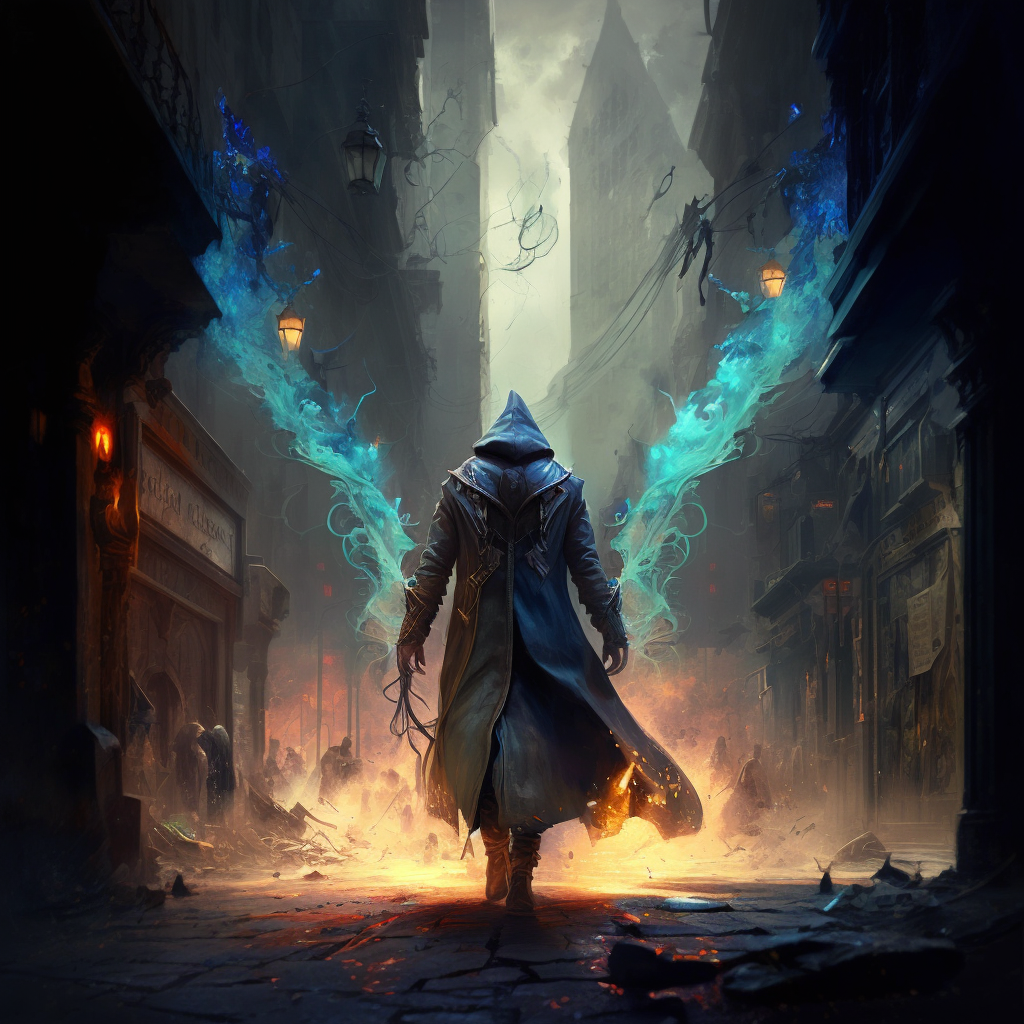
At first, I didn’t plan on sirens being the name for the female warlocks. The characters chose the title by themselves. I even wanted to have mermaids in the series but never got around to writing them in. Not to say that they do not exist in this universe. They are quite rare and belong to the shapeshifter category more than this one.
Definitions:
Siren: a powerful female witch with inherited abilities. They do not require being part of a Circle to boost their power because it grows with age.
Warlock: same as above but male.
Magical limitations: Warlocks and sirens, like any other magical creature in the series, have a limit. They cannot manipulate the souls, control spirits of the dead (only summon them and contain them), and they risk their body not being able to keep up with their power as they get older. Most of them die as young as 40 or 50. Those who made a contract with a demon or kept stealing the life energy of others continue to live on beyond their human years.

Grimoires: books of spells written and improved on by numerous generations of witches. Typically, a grimoire is kept by the descendants of a bloodline. When said bloodline dies out, the grimoire is meant to pass on to a trusted friend or Circle. Yet, a lot of them were stolen or lost over the centuries.
Powerful demons, too, decided to keep them from witches’ reach by taking them back to the Demon Realm. It was only then that the new generations of witches were unable to continue creating arcanae mortum daggers.



Pixies: demonic creatures summoned through a lengthy ritual to bind and force a lesser demon into servitude, typically the contract is sealed into a piece of jewellery the pixie wears. Once a bond is created between a warlock and the demon, the creature becomes visible in the Human Realm and is fed a soul to complete the contract. If the master dies before passing on the ownership of a pixie, it consumes its master’s soul as a reward. Masterless, they become violent and attack unsuspecting humans. Once successful, they devour their victim’s soul.
Wiccan Circles

Magic is a major part of this series’ universe as you might have guessed by now. The Wiccan Circles were formed by the less powerful sirens and witches who remained alive by hiding themselves from Gin (see the previous section for details) and his crusade. Instead of stealing powers from others, they decided to share their gift with select few people, which lowered their magic’s threshold. This is why when the witches of a Circle work together on a spell, it is that much more powerful. They are combining the ability that was divided among many.
Definitions:
Witch: A man or woman who belongs to a Circle and possessed magical abilities.
Circle: a congregation of witches who join their power together for greater defence and offence. A number of witches in a Circle may vary depending on their beliefs and the type of magic they practice.
High Priest/ High Priestess: a witch with the greatest magical ability in the Circle. Typically, the position passes down from mother to daughter or from father to son.
Mother/Father: Refers to Mother Nature and Father of Creation. Many witches believe in the spiritual world and the power of nature.
Mental shields: a mental barrier that witches devised to protect themselves from external influences. It is a very important layer of protection for their soul and helps them from getting possessed by demonic entities too easily.
Common practice for witches is to fortify their mental barriers over the years. Doing so not only helps hide their presence, it also allows them to withstand vampire and ghoul manipulations.

White witches: witches who draw on the energy from nature around them. It is mostly associated with healing and defensive magic. For offence, they can curse others, but it often requires self-sacrifice or an entire Circle to help with the spell.
LAWS:
- Do not harm the innocents.
- The Circle comes first.
- All children must be taught in the Circle’s way.
- Blood Magic is forbidden.
- Sharing the Circle’s secrets with the supernatural beings is forbidden.
- A witch who falls in love with a non-witch must leave the Circle and fend for themselves.

Blood witches: witches who practice blood magic, also known as sacrifice magic. They draw on the life force of their sacrifice and use that energy to convert it into powerful spells. Their magic is formidable and dangerous ranging from manipulating the elements to stealing powers of others. For young practitioners, the pull of the magic can be addictive and cause a new witch to lose control and often their lives to the power. Those who had mastered blood magic without giving in to its powerful temptation can use the blood inside a living person as a sacrifice at a distance.
The Circles of blood witches are often smaller (3-6 people) than those of white witches (8-12 people) because of the amount of raw power they draw in.
Blood witches have little to no rules. Their focus is on gaining power and growing it. The riskier the spell, the more excited they become as magical practice brings them enormous pleasure.
They try to not get involved in the problems of other supernatural creatures as much as possible. Many blood witches serve the False Goddess Iridia. She helped them develop arcanae mortum daggers to fight invaders from other realms and is revered for her power and insight.
Saints

A saint is probably the most pitiful creature in the entire series. They are born as part of an ancient game designed between the False Gods who occupy the three realms.
Their lives are filled with terror, loneliness, isolation, and disasters that happen because of the demons who seek to consume their souls to become powerful or to convert them. In the records to date, the majority of the saints at the end of their short existence chose to become angels, few became demons—Amaenagh is one such saint—and some decided to be reincarnated as humans.
AUTHOR’S NOTE: When Nadine was captured in Crumbling Control by Reaver, and her soul was shattered, that was considered as being erased from existence. She will never be able to reincarnate. Her angel, Horus, would have received a long punishment had the Angel Realm’s gods not decided to see this play out and assign him to guard Reaver instead. It was not their intention when Horus left with Reaver for the Fourth Realm. His betrayal had caused an uproar among the angels and their creators. Some even believed he followed in his teacher’s—Michael’s—footsteps.
This was never mentioned before in the series, but the reason why Nadine always behaved the way she did and never saw her adoptive parents was because she feared they would befall the same fate as her biological mother and father who were taunted by demons to kill one another just to inflict emotional pain on the saint. The first boy she had come to like also was killed by the darkness that only Nadine could see. To keep others from getting hurt, she refrained from making any more friends. As long as she was alone, she believed that she was safeguarding her heart from more hurt.
Definitions:
Saint: a human who is born with multiple choices for their Afterlife. They are always protected by a guardian angel who will do anything to protect his/her charge. Saints exude strong energy from birth. Their existence often draws demons to them, and many of them suffer the loss of loved ones because of this.
False Gods
A long time ago, before angels existed, a power-hungry warlock, Gin, was on a quest. He took the lives of his brethren and followed the path to the Well of Souls. Upon his arrival, he discovered a new realm where he could become a god and create anything his imagination came up with. But, once he created his ideal servants—angels—out of souls, he kept thinking of the other two realms.
Which one is better? He often would think.
It was then that Gin decided to split into three. The experiment did not go as planned. Each part of him had a different personality and ideals. So, one remained in the Angel Realm, one travelled to the Human Realm, and the last one forced their way into the Demon Realm. At the time, the Human and Demon Realms were populated before the warlock existed. So, he knew well that the True Gods were hiding among mortals.
The False God in the Human Realm urged the remaining sirens and warlocks to bind the gods into servitude. Without their protection, the realm belonged to the False God.
Definitions:
False Gods: is a name given to the gods who came from Gin and his counterparts. Because Gin began his journey as a mortal, he is not seen as a True God by Nyx and the other primordial deities. Every time Gin’s copy splits into two, their power is halved. But, if one of them is killed, that power is restored to its original place.
HUMAN REALM’S FALSE GODS:



Iridia (Goddess of the Magi) – built numerous Circles of blood witches to fight those who threaten her rule. She has a strong hatred for demons and angels, making it her mission in life to try and exterminate them if they dare set foot in her realm. This is the reason why only one angel at a time can be allowed in the Human Realm to guard a saint and why very skilled soul collectors enter through the Demon Gates.
Orion (God of the Hunt) – controls dozens of hunter clans and is believed to be an angel who helped train the first hunters. He hates all of the supernatural beings because he fears the day when they could join forces and fight against him like one thousand years ago.Seth (God of Power) – a False God who was stripped of his power by his brother and sister. He remained in the shadows, controlling and manipulating human politics to benefit himself.
Seth (God of Power) – a False God who was stripped of his power by his brother and sister. He remained in the shadows, controlling and manipulating human politics to benefit himself.
True Gods
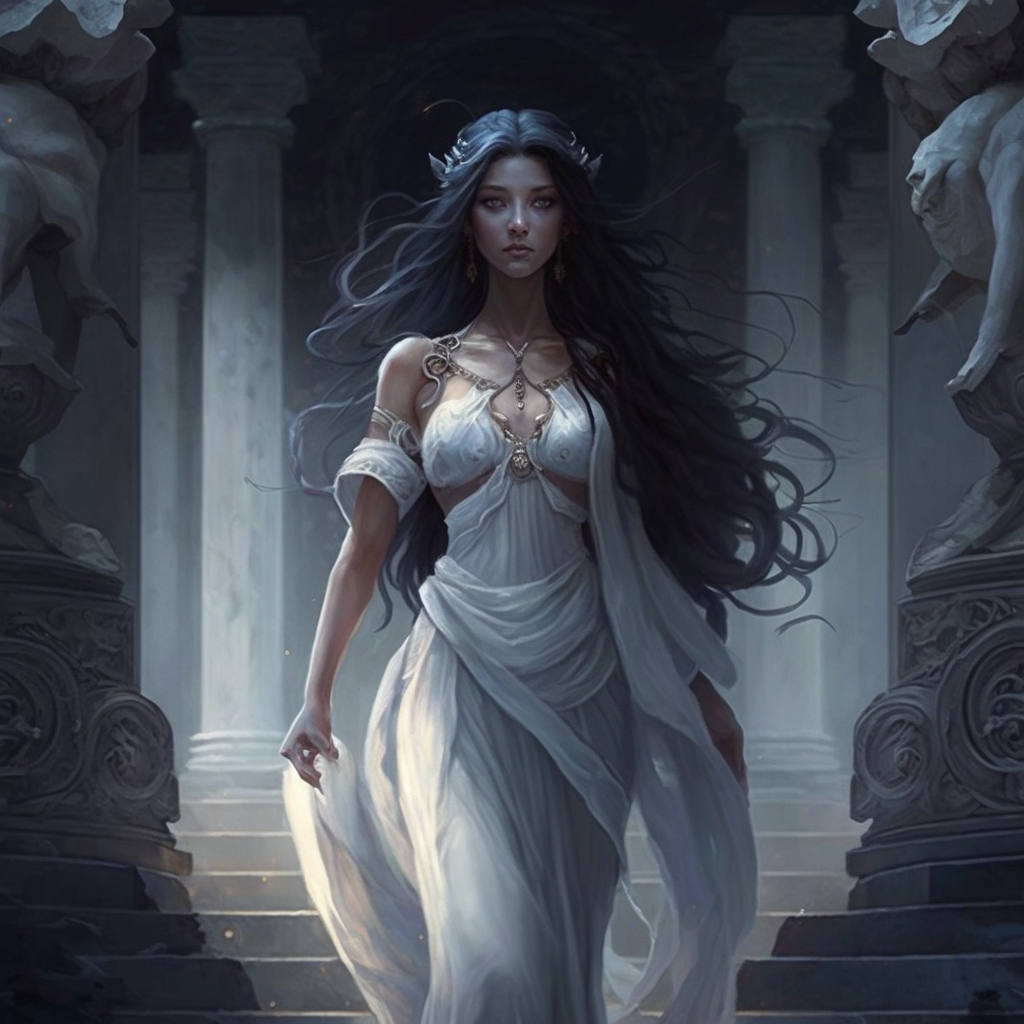






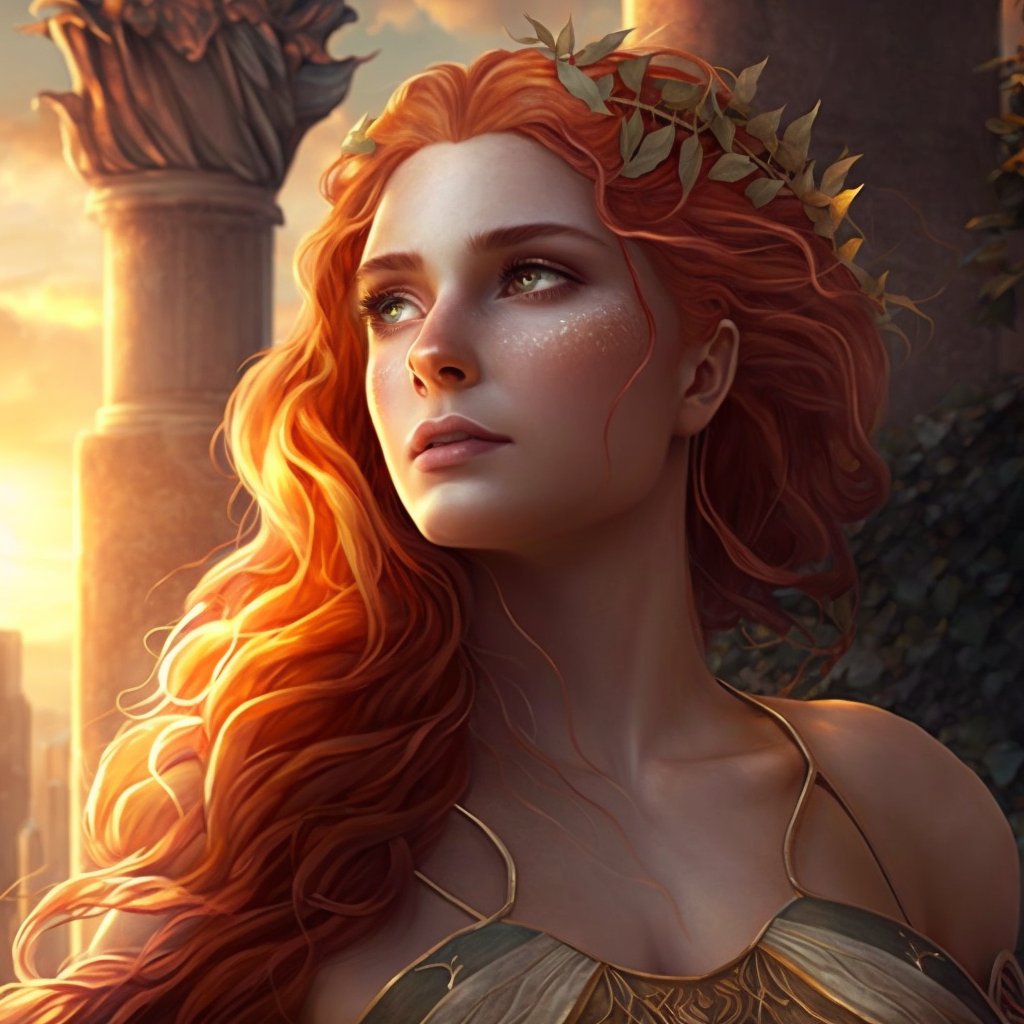


The peek at the aspect of the creation of the supernatural in the Helena Hawthorn series can be seen in Cherished (Spin-off novella). In that particular side story, you meet one of the real goddesses of the night, Nyx (Greek mythology). She gifts Perri and Hans abilities but at a cost. After all, what god would give something for free?
In the Helena Hawthorn series, Nyx is also the goddess who gave magic to the humans in the Human Realm. The series does include the primordial deities such as Chaos (male in this series), Nyx, Erebus, Eros, Tartarus, Gaia, Hemera, Chronos, Pontus and Ouranos. The only operational one is Nyx as she is the sole goddess who remains unbound. She hides in the night and manipulates events to try and bring back her family, so far with no success.
Before Arthemis was created, warlocks and sirens got out of control. They wanted more power. So, they tricked and bound most of the true gods with curses, turning them into servants who couldn’t remember their true identity. Each deity was bound to a clan leader who passed the contract and control to the next generation of the creatures they now think of as demonic servants. Even the oldest of the warlocks no longer remember that these beings are the True Gods of the realms.
Definitions:
True Gods: the primordial deities who have been cursed or forced into servitude by powerful magic users. Many of them had forgotten who they were because their mental state had to be broken to turn them into a perfect weapon used for protection or war.
Shapeshifters
So far, we have talked about many different supernatural beings that reside in this series’ universe. I believe that shapeshifters play a major part in it as well. Although werewolves should be included in here, I thought it would be best to give them their own section because they are much more prominent, for the time being.
I am excited that the future will bring more of these creatures into the books. In Dark Affiliations, you met a siren who was able to manifest her power and change her body into a huge spider. That was partly because she killed many shifters in her lifetime and stole their powers. Her preferred creature just happened to be a spider (and because they terrify me). Like this, not only are those born with the gift can change their form; witches who stole power from shifters can do the same. It is, indeed, a vicious and competitive world that Helena and Lucious are in.
AUTHOR’S NOTE: I’ve mentioned this in Dark Affiliations, but there are dragons in this series. What you may not know is that there are only two left. One of them remains crystallised due to a magic spell he was put under, and the other is the last remaining survivor of a European Dragon Clan. As you know, some vampires worship dragons, thinking that they are better off serving those creatures rather than the Vampire Councils. And, unlike other shapeshifters, a dragon’s true form is not their human body. To blend in with the humans, they had compacted their magic to become human-like. Changing form to that of a human also limits their power dramatically.
Definitions:
Shapeshifters are creatures that can change form at will or manifest their powers by modifying their shape. This includes dragons, werewolves, skin-walkers, mermaids, and certain magic users.
SPIRIT guardian/knight

A warrior who’s soul was captured by a True God/Goddess and then modified. Spirit warriors do not have a will of their own and feed off of the soul-energy of their contracted master. They can manifest weapons that only hurt their target and have a slightly see-through appearance.
If the master is a True God, they can operate in the Human Realm eternally as long as they’re summoned. On the other hand, if a mortal with a finite soul becomes the contractor, the contractor’s soul is bound to be consumed after a few summons.
Character Gallery












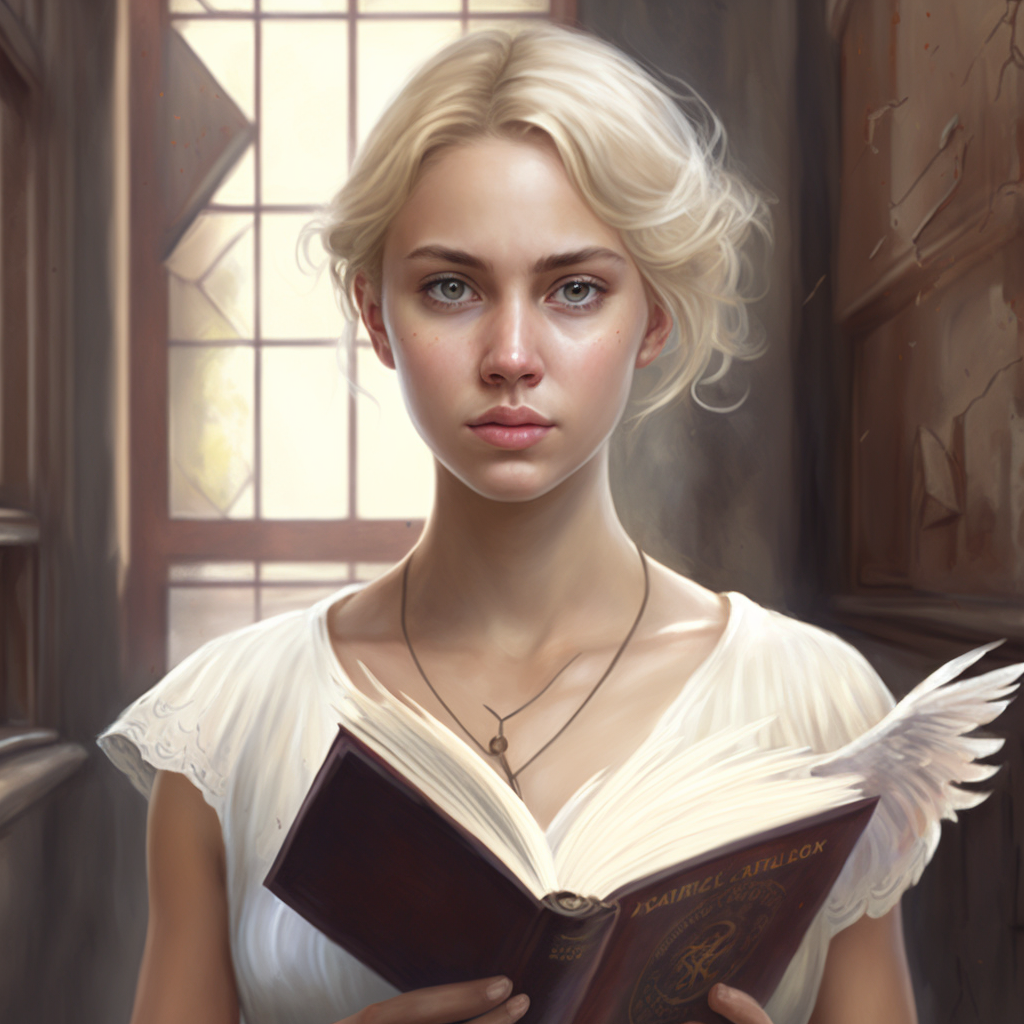

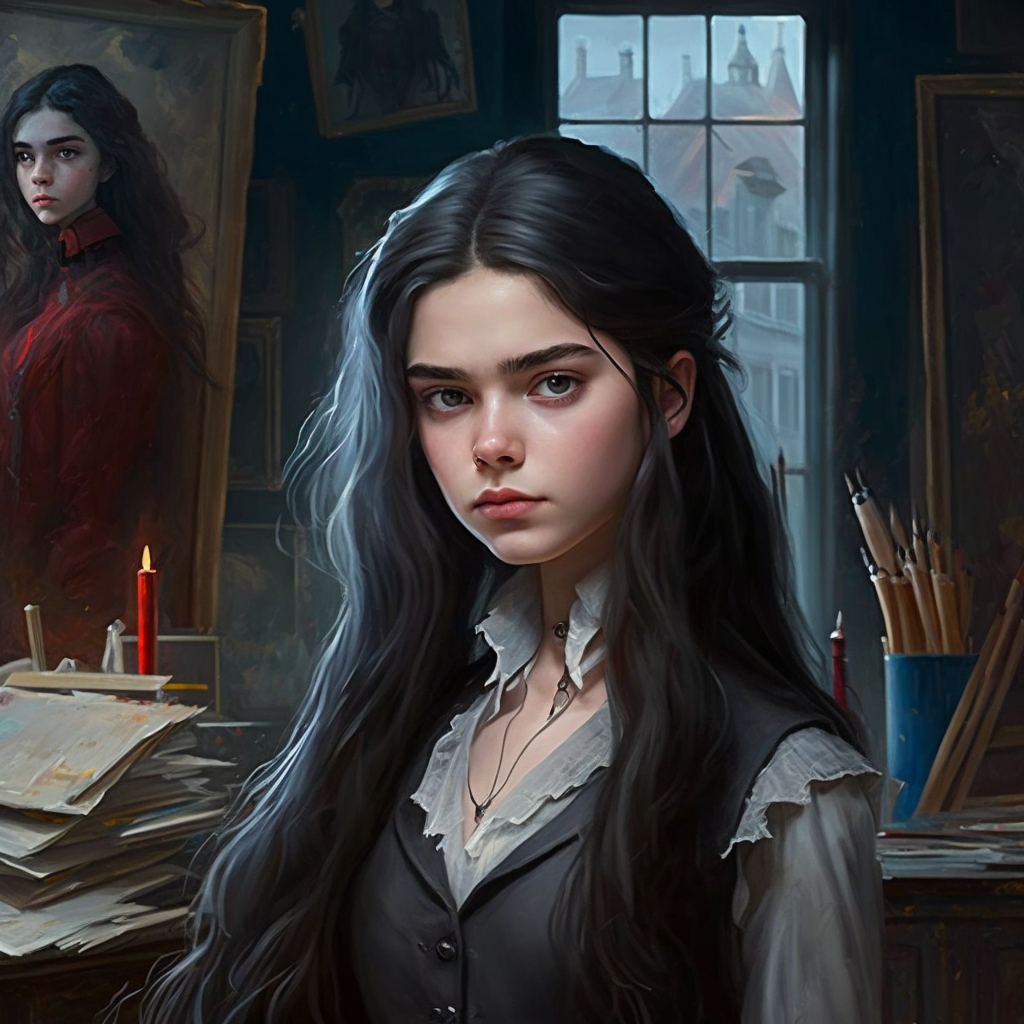




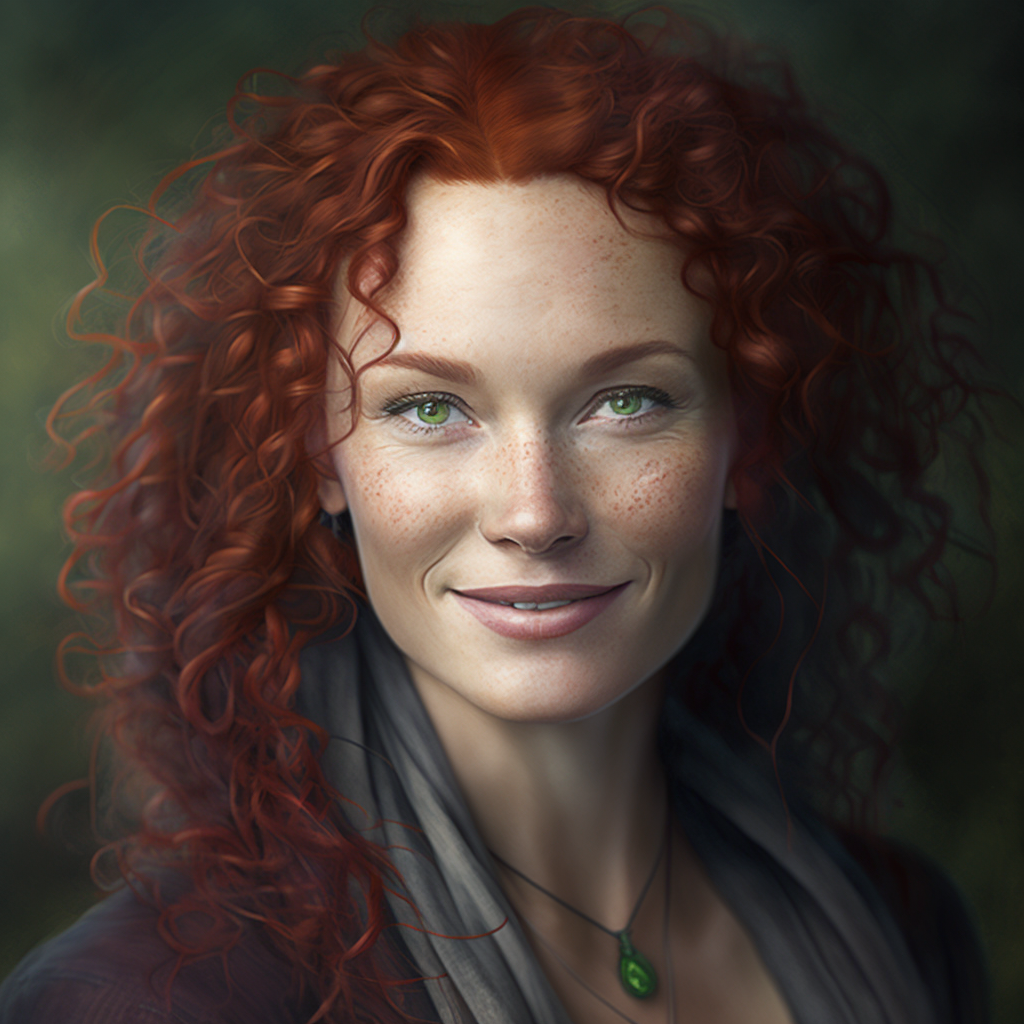







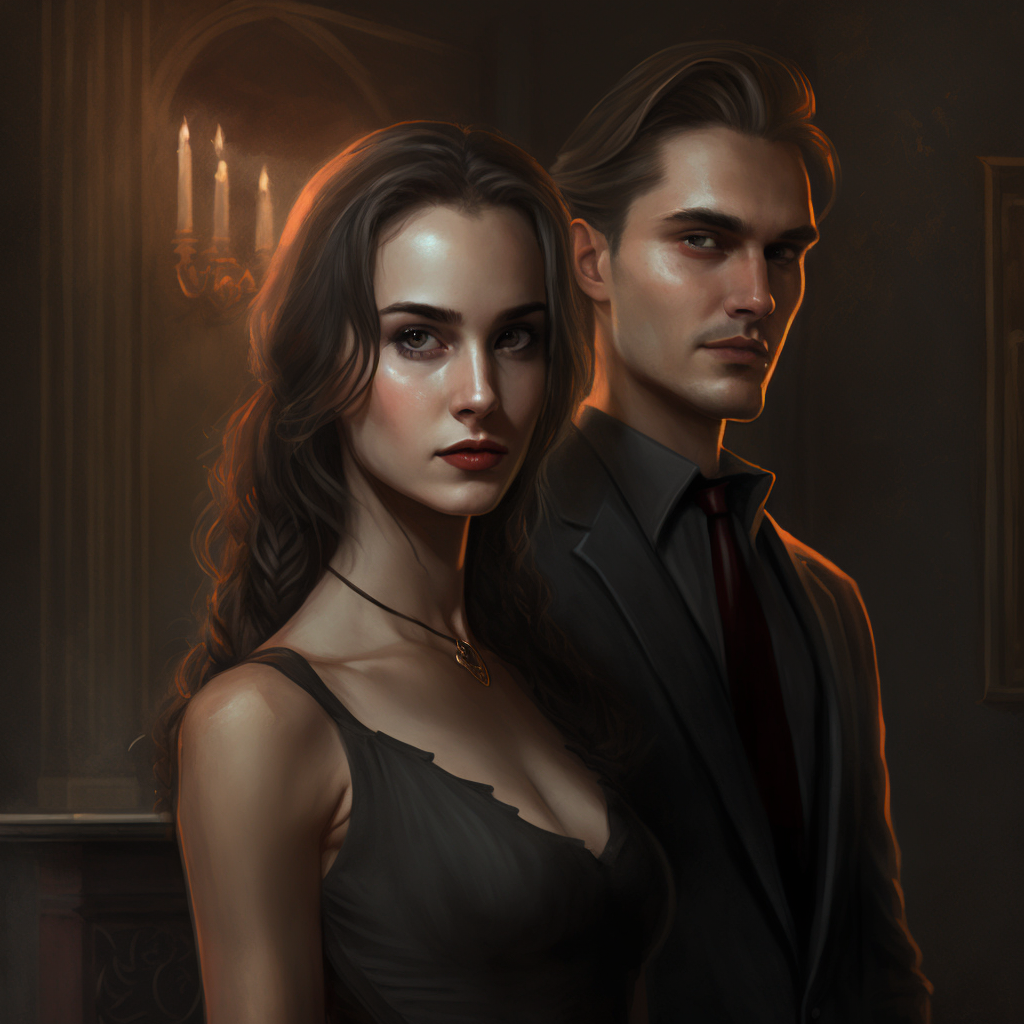






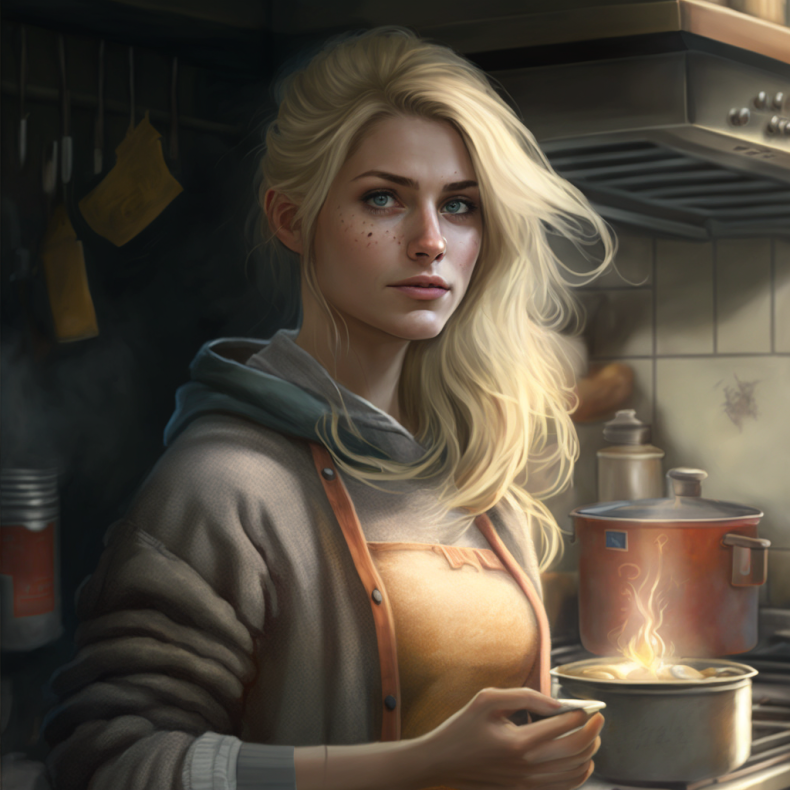


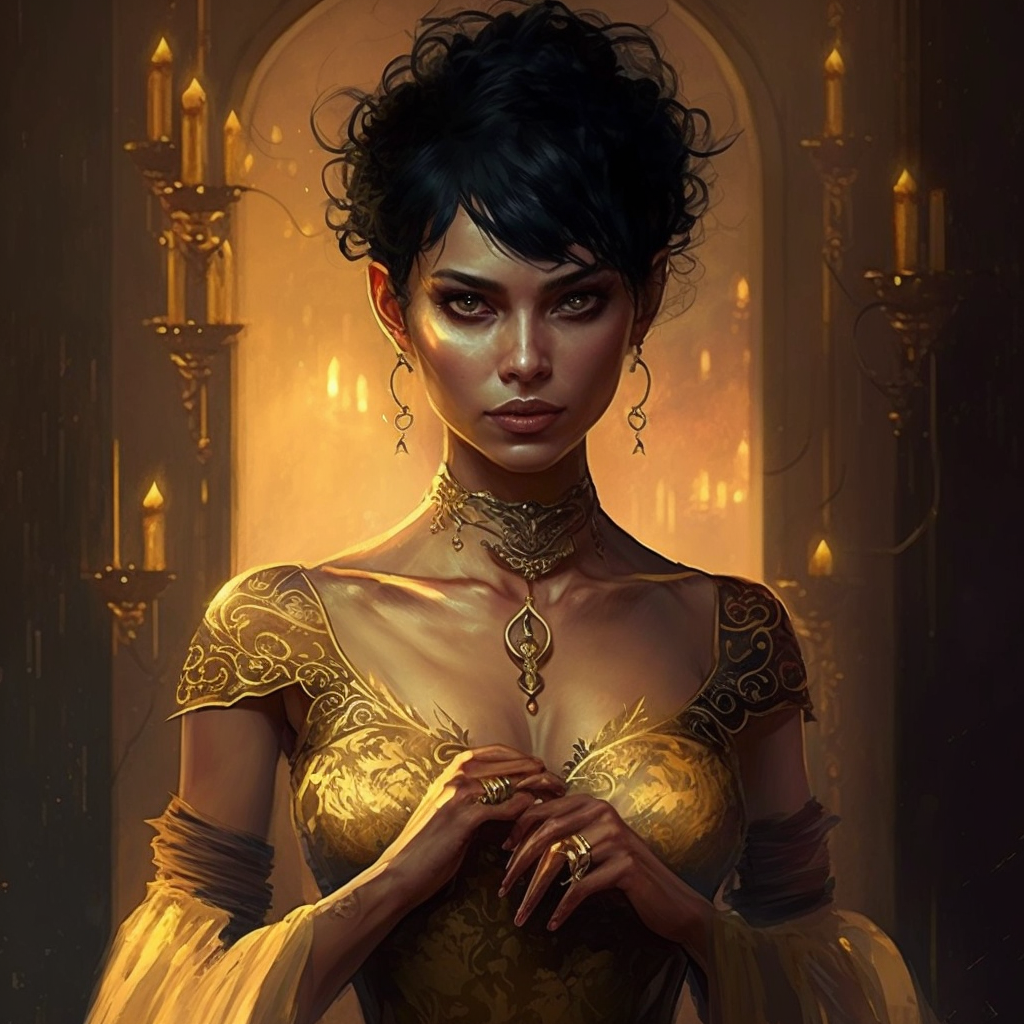
Isha

*Some Images were created in MidJourney AI for illustration purposes only.




